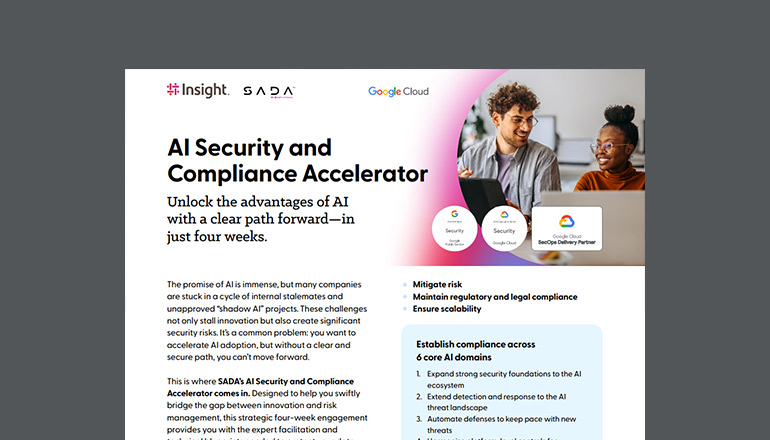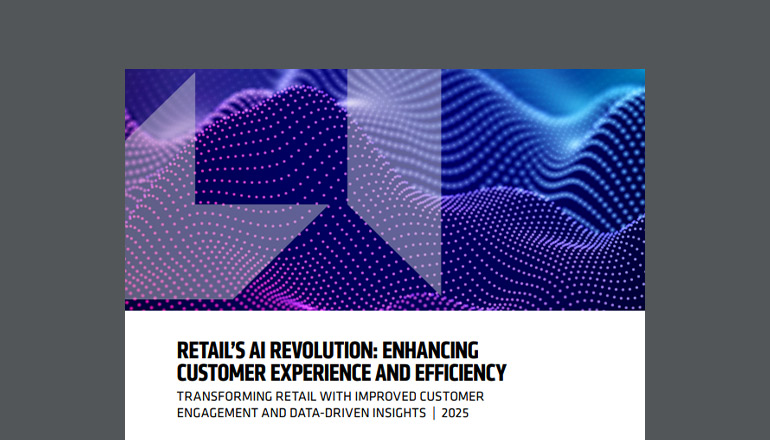Article Contact Tracing 101 — What your Business Needs to Know
Businesses are exploring how to effectively use contact tracing solutions as part of ongoing efforts to keep employees and customers safe.
By Insight Editor / 17 Sep 2020 / Topics: Artificial Intelligence (AI) Devices Digital transformation

We’ve seen the workforce undergo many changes to promote worker safety. As organizations reopen and reestablish normal workplace activity, there are still many questions about the best way to prevent the spread of disease.
What is contact tracing, and why does it matter?
In an effort to keep workspaces as healthy as possible, many businesses are considering contact tracing methods. What is contact tracing? When a person becomes ill, there is typically a period of time between when they contract the illness and when they are diagnosed. In this time, they interact with others. The goal of contact tracing is to find and notify those who interacted with the sick person as quickly as possible. They are encouraged to stay distant from others and monitor symptoms until they can be sure they are healthy. This, as a result, can slow the spread of disease.
When done effectively, contact tracing can be an important factor in creating safer workspaces. Although contact tracing is not a new concept, the process has evolved to include digital technology to creatively identify and notify people who may have been exposed to disease. Businesses have a choice in adopting the solution that will be most effective for their workplace depending on their unique needs.
Manual contact tracing
Manual contact tracing typically involves conducting phone interviews with infected people to identify those they may have passed the disease to. They recount interactions of close contact over a specific period when they may have been contagious. Tracers then notify the individuals identified and ask them to follow health guidelines to reduce the spread.
While manual contact tracing has proven effective, it is tedious work. Contact tracers can have a long list of people to reach every day, increasing the time it takes to notify those who may have been exposed. For people who are sick, relying on memory to recall all interactions over an extended period can also be extremely challenging.
The benefit of digital contact tracing
Given the pitfalls of manual contact tracing, digital tracing technology has become a preferred solution for many businesses. Digital solutions are favored for their ability to reach contacts fast and more accurately than manual methods. Digital solutions can also easily account for individuals who may have been exposed without realizing — such as in an office lobby where people don’t know each other.
Wearable solutions
Wearable contact tracing solutions include Bluetooth® Low Energy lanyards, badges and wristbands to detect proximity between individuals. These wearable devices bounce signals off or communicate with fixed beacons installed within the environment to generate exposure logs and document interactions between people and the amount of time they spent in close contact. If an individual becomes sick, the log can identify those who are at risk for becoming ill. Exposed employees should exercise increased caution — whether that means getting tested, working from home or not working until it is safe to do so.
Wearable solutions are simple to adopt into everyday life. Badges and lanyards are already common in many workplaces and can be easily incorporated. For example, employees pick up a device at the entrance and drop it off at the end of the day. Wearables are also ideal when looking for a minimally intrusive solution that can notify individuals quickly.
Smartphone applications
Smartphone contact tracing applications use GPS to share location information that is timestamped. If a person becomes ill, they mark it on the app. This typically sets ofF a chain of notifications, informing people they have had close contact with. Mobile apps are effective for notifying people promptly.
Since most people own a smartphone, mobile applications could be a clear solution. Businesses can seamlessly incorporate mobile contact tracing solutions in work environments where these devices are already widely used.
What about privacy and security?
Although contact tracing solutions have been touted as an important way to limit disease transmission, some businesses and employees may resist adopting these methods citing privacy and security concerns.
Anonymity of identifying information is a top priority for all contact tracing methods — and digital solutions can be set up to not record this information at all. Wearables and smartphone apps opt for anonymized location data and IDs to protect user privacy. The permissions on these devices are also customizable — allowing administrators to adjust permissions for who can view data and providing the option turn off location sharing at any time.
Choosing the right solution for your business
As contact tracing becomes more common in the workplace, it is important to choose the method that fits the needs of each individual business. When used effectively, contact tracing can be an integral component of an organization’s strategy to prevent the spread of disease.







